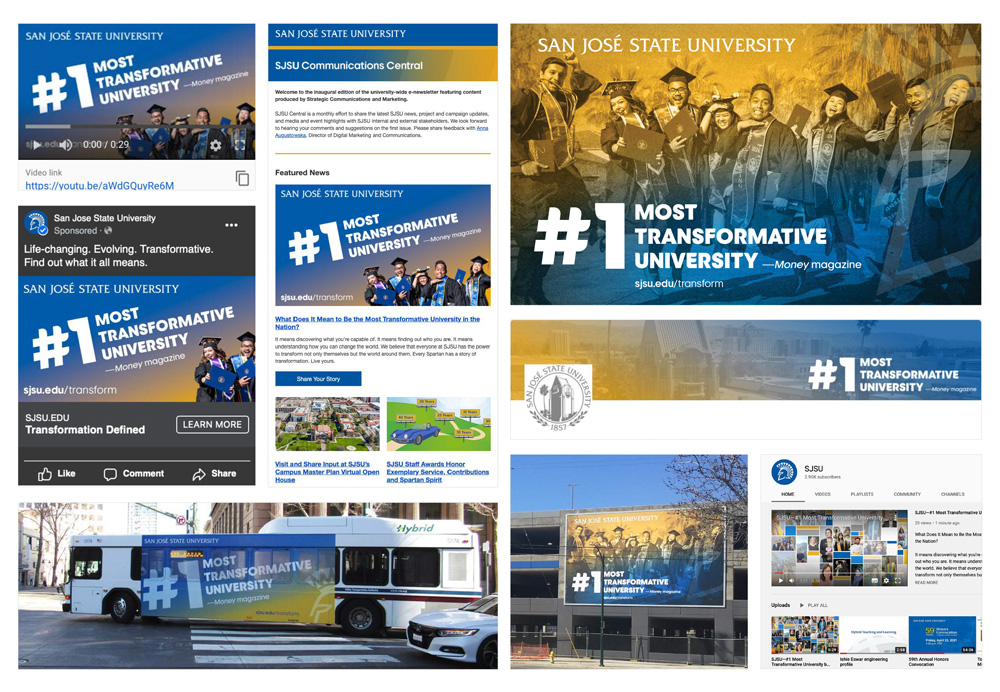Digital Marketing and Campaigns
On this page:
Strategy
Digital strategy is a roadmap for your departments’ communications and marketing success in the digital space. It defines your primary audiences, channels, and tactics that support your overall marketing efforts, mission, and goals.
The steps you can take today:
- Analyze your current digital marketing and communications efforts by auditing existing
digital channels, such as social media, website, email marketing, and paid advertising.
Summarize lessons learned from these channels and identify the most successful campaigns.
- Determine your target audience. Who is the primary audience for your digital marketing
messaging? Create personas to better understand your audience’s content needs.
- Strategize on your primary messaging: What do you want to convey? Adjust your brand’s
tone of voice per channel, audience, and message type.
- Focus on the most successful tactics and channels. Be consistent and strategic in
your efforts. If it worked in the past, it will probably work again!
- Experiment with new content ideas, platforms and audience members and expand gradually.
Five social media profiles with consistent content will yield more results than ten
accounts with sporadic and infrequent messaging.
- Fill the gaps and diversify your digital marketing efforts. Reach your audience via various channels to reinforce your message.
Digital Ads
By integrating similarly branded images, videos, and copy across multiple platforms for a campaign, you can maximize the power of your messages and calls-to-action to your audiences without having to reinvent new assets for each communication or touchpoint.

Email Marketing
San José State University utilizes Adobe Marketo Engage, a leading Engagement Platform that empowers marketers to build brand value, grow revenue, and prove impact. You may submit a request for a Marketo seat for you and your team members (license availability is limited and there may be a waitlist).
Strategy When Building Your Email
- Identify at least 1-2 goals for your email. Examples:
- Engage more with businesses to increase the number of internships, grants and scholarships offered for students and faculty.
- Increase number of attendees to events
- Improve customer service to incoming students
- Be sure to have emails proofread.
- Adhere to best practices when designing your email
Best Practices
Images/Video
Don’t:
- Use stock images and clip art.
- Authenticity equals trust with users. Keep in mind images are optional—It is often better to not have anything at all than to use a generic stock photo.
- Rely on using photos of text over plain text.
Do:
- Optimize images for the web (resize images to a maximum of 800 pixels width for email)
- Leverage our SJSU photo library. You may also contact a UMC team member for missing subject matter that you would like us to capture.
- Use images to provide visual support for your text, not replace it.
Text/Tone
Don’t:
- Overwhelm readers with long and wordy content.
- Hyperlink vague text such as “click here” or “learn more.”
- Use embedded links (for example: use “Check out ‘Our Event Name’” and not: “Check out ‘Our Event Name’ at www.sjsu.edu/eventsite”).
Do:
- Speak in short sentences with an active voice.
- Understand your target audience.
- Use compelling, brief, and to-the-point subject lines for your email.
- Be concise and brief; less is more.
- Use short, but descriptive direct calls-to-action (strong action verb & 1-4 words max).
Visual Style
Don’t:
- Overuse background colors and different fonts (1–2 fonts).
- Overuse call-to-action buttons when a hyperlink would suffice.
Do:
- Utilize background colors that have enough contrast with your text to be accessible. To maintain color contrast use WebAIM color contrast tool.
- Ensure there is enough white space to balance out the content.
Tips and Strategies
- Use curated and engaging content.
- Identify the purpose of your newsletter and define a strategy; avoid the “everything but the kitchen sink” strategy (Ask yourself whether you really need an e-newsletter and have the resources to support it).
- Determine the best distribution frequency and be consistent.
- Leverage the event calendar to host your content and link to it from your email newsletter for more details.
- Test your newsletter with your colleagues, check for errors (e.g. broken links, typos).